What is the difference between chickpeas and peas? - let's deal with these beans
Most people mistakenly believe that chickpeas and peas are the same thing. In fact, these are completely different legumes, from their place of origin to the dishes in which they are used as an ingredient.
In the last few years, chickpeas have become a popular “fashionable” food, with chefs and food bloggers praising its properties and calling it almost one of the main products in a healthy diet. Let's find out how peas and chickpeas are similar and different and why chickpeas have become so famous.
What is the difference between chickpeas and regular peas?
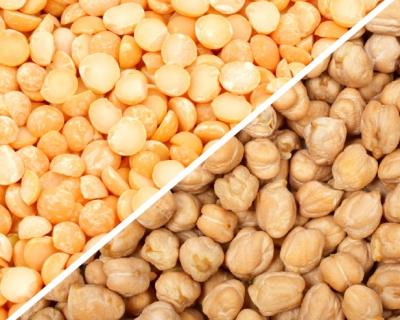
Chickpeas are the so-called Turkish peas. However, it is impossible to put an equal sign between chickpeas and ordinary peas, because they differ in many ways, from taste to shape. Next, we will study in detail how chickpeas differ from ordinary peas.
Difference in appearance and characteristics
Chickpea seeds are closer to yellow in color and larger in diameter (up to 1 cm), unlike pea seeds, and the word “lumpy” is best to describe its surface. Peas, as we remember, are smooth and small.
Chickpea pods contain 1-2 seeds (with rare exceptions 3-4), while pea pods are oblong and can contain an average of 5-7 seeds. By this feature they are easy to distinguish.
Differences in composition and calorie content
If speak about benefitBased on the composition and calorie content, chickpeas win the unspoken competition. The thing is that due to the high amount of vegetable protein contained (19.0 per 100 g of product), it is perfectly absorbed by the body, approaching poultry meat in this indicator.
Therefore, chickpeas have long been the basis of the diet of adherents of a healthy nutrition system, vegetarians and vegans. The high fiber content also has beneficial effects on health, especially on the intestines. The composition of chickpeas in the ratio of BZHU (proteins, fats, carbohydrates) looks like this: 19.0, 6.0, 61.0 with a total calorie content of the product of 364 kcal.
Note. It’s not for nothing that people called peas “meat for the poor.” Its low purchase price is fully justified by its usefulness: per 60 kcal, peas contain 6.0 proteins, 0 fats and 9.0 carbohydrates. Peas are not high in calories at all, so consuming them is not dangerous for those watching their figure. But some note that to get a feeling of fullness, you need to eat a considerable amount of it, and this leads to bloating.
Obviously, chickpeas are much “heavier” than peas, but they contain more elements necessary for the smooth functioning of the body.
Difference in benefits and harms
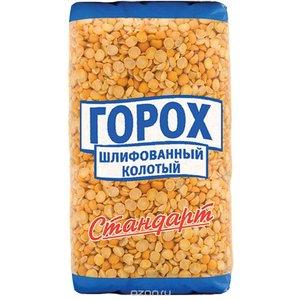 Unfortunately, nature has not yet created an absolutely useful product: each has a number of contraindications. Since chickpeas are a legume, a completely expected side effect is increased gas formation, which can turn from a minor discomfort into a big problem.
Unfortunately, nature has not yet created an absolutely useful product: each has a number of contraindications. Since chickpeas are a legume, a completely expected side effect is increased gas formation, which can turn from a minor discomfort into a big problem.
People with a weak gastrointestinal tract feel heaviness after consuming it. It is also not recommended for those suffering from gout, cystitis, bladder ulcers, or thrombophilia. As a last resort, if you want to eat chickpeas, but are concerned about your health, pre-soak them in water - this will “soften” them.
Attention! Peas lead to even more severe bloating, so it should be avoided by pregnant women, breastfeeding women, and the elderly. Also, due to the fact that eating peas and chickpeas provokes an increase in uric acid levels and salt accumulation, if you have the previously mentioned diseases, you should carefully introduce them into your diet.
Thus, with decreased intestinal tone, kidney disease and genitourinary system, the presence of chickpeas and peas in the diet can cause complications and relapses.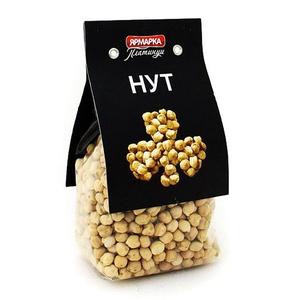
But since the negative consequences of eating legumes do not occur so often, it is worth paying more attention to the benefits.
The high calorie content of chickpeas makes dishes made from them extremely satisfying and rich in micronutrients. Turkish peas are rich in B vitamins, calcium, magnesium and potassium, so regular consumption of dishes with them improves the functioning of the cardiovascular system, stabilizes blood sugar levels and generally improves health.
Peas also provide a long-lasting feeling of fullness and often become the basis for food on so-called “fasting days.” It is also believed that peas have an antioxidant effect, because the body gets rid of free radicals.
Both chickpeas and peas, when consumed 2-3 times a week, reduce the chances of malignant tumors, normalize cholesterol levels and equalize blood pressure.
Did you know that chickpeas have beneficial effects on our eye health? It turns out that the elements contained in chickpeas can protect the lens from clouding and thereby prevent the occurrence of cataracts. There are many programs for the prevention of certain diseases in which chickpeas or peas are necessarily present.
Which is healthier?
The question of the usefulness of a particular product can safely be called philosophical, because attitudes towards food change depending on fashion trends, scientific discoveries and trends in the field of a healthy lifestyle. Therefore, do not be surprised if in a few years chickpeas or ordinary peas are recognized as dangerous and almost prohibited products.
In the meantime, let’s not ignore their rich composition, which undoubtedly testifies to their usefulness. But since we have begun to compare these legumes with each other, we will try to identify the benefits from two different positions.
Unfortunately (or maybe, on the contrary, fortunately), it is almost impossible to conclude which of them is more useful. The usefulness of any product is determined not only by scientific knowledge, but also by the reaction of the human body.
Since each of us is unique, some people find it much more enjoyable to eat chickpeas than peas. And this choice is determined, for example, not only by taste preferences, but also by the state of the gastrointestinal tract, intestinal microflora and other characteristics.
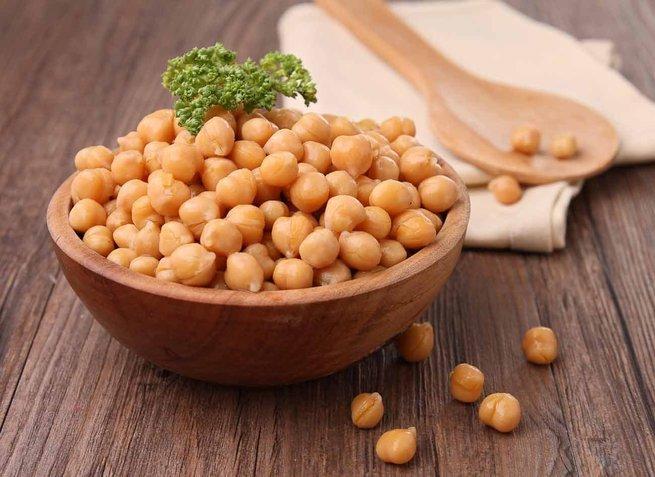
For example, chickpeas have more protein than peas. But those who have difficulty digesting protein, or people with bladder diseases, will usually refuse a dish where chickpeas act as an independent or additional ingredient. For them, peas are preferable, because their calorie content is much lower and the amount of amino acids they contain is higher.
And if we talk about the benefits of peas, then green peas are considered the most useful, not yet dried and not subject to thermal and mechanical treatment.
Its beans contain the most nutrients and elements necessary for the human body, which are favorably absorbed.However, some note that it is fresh green garden peas that provoke unwanted excessive bloating.
Remember, if your appearance is especially important to you and you are watching your weight and fitness, then both chickpeas and peas are real superfoods! There is an opinion that they promote weight loss. Of course, this is not true, because we lose weight by burning calories. But with regular consumption of these legumes, you will improve the functioning of the digestive tract, and a bonus from their consumption will be a reduction in hunger levels.
Peas and chickpeas are very filling foods; you can’t eat them in large quantities, but they cope perfectly with the desire to snack!
Read also:
We preserve the taste and beneficial properties all year round: pea pods.
Areas of use
Legumes are used in cooking and cosmetology.
In cooking
Both peas and chickpeas are used in cooking mainly in the cuisines of eastern countries. They are used to make side dishes and independent dishes that are distinguished by their rich taste and nutritional value. Dishes made from these legumes have become especially popular among vegetarians, since their high protein content makes legumes an excellent alternative to meat, allowing the body to obtain the substances necessary for full functioning.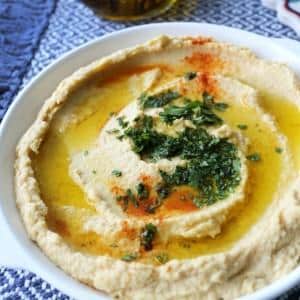
The most famous chickpea dish is hummus. This puree, made from ground chickpeas, various spices and oil, goes well with freshly baked bread flatbreads (pitas) and vegetables, and is quite suitable as a sauce for meat.
Peas and chickpeas are often added to soups.In Russia and in a number of European countries, smoked pea soup is popular, which has an amazing spicy aroma that many people enjoy. There is a recipe for a nutritious tomato and chickpea soup, which is lower in calories than pea soup, so it is more suitable for weight watchers.
As a snack for beer, some restaurants (bars, pubs) serve deep-fried chickpeas with spices. Crispy, spicy beans are more reminiscent of nuts, so they go well with beer, leaving a pleasant soft aftertaste.
It should be noted that this beer snack is lower in calories than popular nuts.
In cosmetology
For lovers of natural cosmetics and home care, chickpeas and peas will be good helpers in the fight for a healthy complexion and smooth, clean skin without rashes.
There are many options for masks, which are usually a mixture of ground legumes, honey, lemon juice and sesame oil. They are applied to the face and décolleté for 10-15 minutes. Of course, such products do not work miracles, but regular use of masks can really give the skin softness and fill it with the necessary moisture.
Sprouted beans
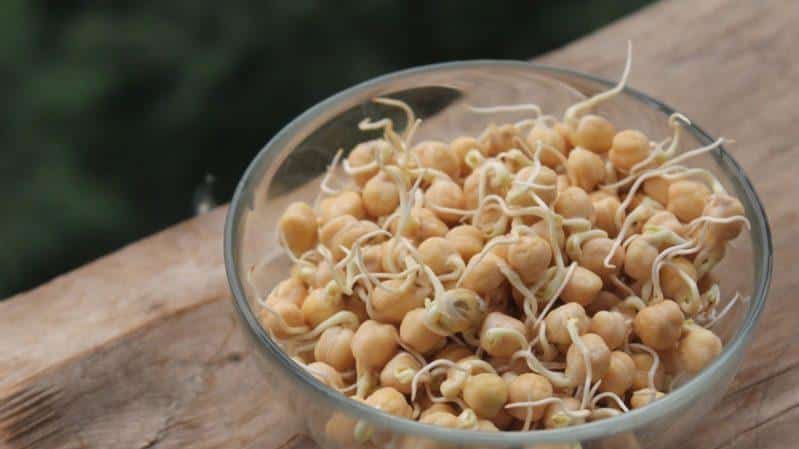
Due to the growing popularity of the healthy lifestyle movement, more and more people are including sprouted seeds and grains, including peas and chickpeas, in their diets. It is believed that they contain the maximum amount of useful substances that the human body absorbs.
Sprouted chickpeas and peas are added to salads and consumed as an independent product. They contain many antioxidants that have a rejuvenating and anti-inflammatory effect.
Sprouting beans is quite simple: rinse, place in a deep container and fill with water so as to completely hide them.. After about 3-4 hours, when the beans swell, replace the water with fresh water and leave for another 8 hours. Then remove all the liquid and cover the beans with a damp cloth, under which they will remain until they germinate. Wet the cloth periodically as needed. After sprouting, store the beans in the refrigerator and eat within 4-5 days.
Conclusion
In Ayurvedic medicine, it is generally accepted that chickpeas and peas belong to the category of drying and astringent products that promote gas formation. But you don’t need to be afraid of this, the main thing is to know about the characteristics of your health and choose the right product.
Please note that the beans must be clean, intact, without dents, stains or any other damage. And the main rule: observe moderation and listen to your body!
Well, somehow your own peas look like this)))))) if you pick your own ripe ones. It’s hanging out in the freezer) ;-)) I don’t receive it at all))))))) I didn’t know that I was rich)
The ones in your photo are store-bought peas, yes, that’s what they are.
He's a blocher and a blocher! One has mung beans - chickpeas, this one has chickpeas. You'll still have to decide among yourselves whether chickpeas are mung beans or chickpeas. And only then powder the brains of innocent readers who are wasting time on your opuses.
So Mash is Indian beans
Since childhood, I have not had gas from eating peas. I was surprised why pea soup is called musical. Rye has an effect, but peas and chickpeas do not.
Thank you for the article. I clarified everything for myself that I was looking for.
Thank you for the article.I needed the information, what I was looking for.